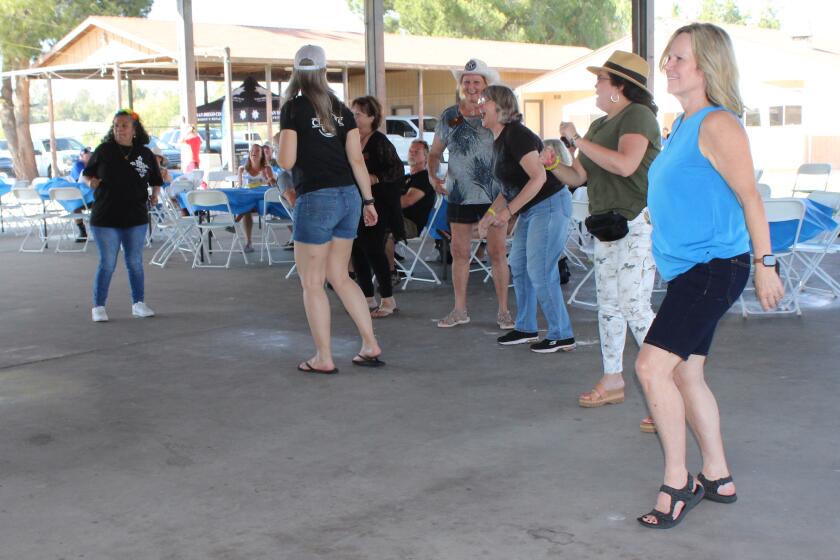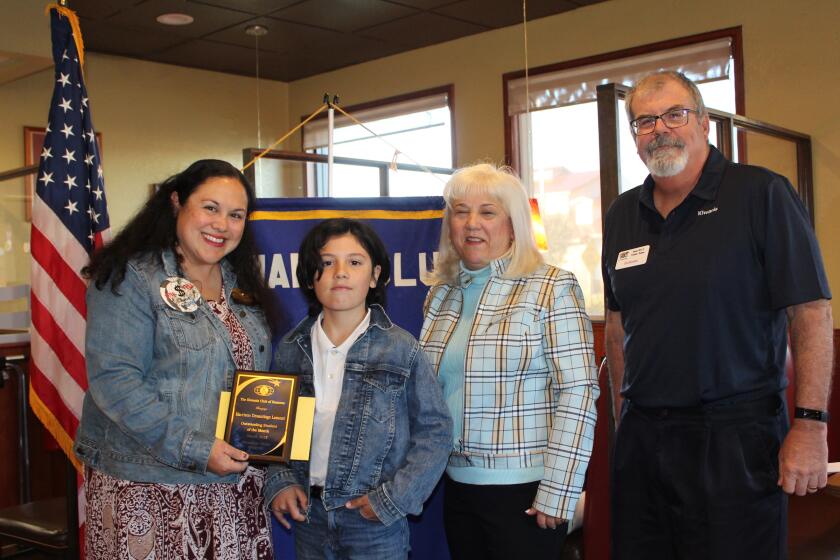Trustees continue search for superintendent
Ramona Unified School District trustees had hoped to introduce a new superintendent to the community at their April meeting, but, unable to reach an agreement with their leading candidate, they instead met in closed session for nearly an hour to discuss what’s next.
The closed session resulted in no decision, school board president Kim Lasley said.
“We are in hopes of having a new superintendent before Bob Graeff leaves,” she said.
Robert Graeff, Ed.D, Ramona Unified superintendent for the past eight years, will retire at the end of the school year, June 30. He announced his plan to retire at the trustees’ December meeting, and since then trustees have held public and private meetings. During the closed-to-the-public meetings, they reviewed applications, discussed prospective candidates, and screened, interviewed and negotiated with their top prospects.
“After receiving substantial feedback from the community about the characteristics they would like to see in the next superintendent, the board advertised the position,” Lasley said at the end of the public portion of the trustees’ April 21 meeting. “...Hopefully, our local community will appreciate the time the board has devoted and will continue to devote to ensure that we find the best match possible in naming the next superintendent for our schools.”
Earlier in the meeting, the board voted 3-2 to approve a 12-cent-per-square-foot increase in developer fees for new residential units of more than 500 square feet and a 2-cent-per-square-foot increase for new commercial and industrial construction. Lasley and trustees Dawn Perfect and Rodger Dohm supported the increase, and Bob Stoody and John Rajcic voted no.
As a result of the vote, developer fees will be the maximum the state allows — $3.48 per square foot for new residential and 56 cents for commercial and industrial units — effective June 20.
Every two years in January, the State Allocation Board authorizes an adjustment to fees that school districts may charge, Assistant Superintendent David Ostermann said before the public hearing to consider the rate change. The state requires a justification study before a district can increase fees.
Parent Kim Newcomer was the only person commenting during the public hearing.
“It says the growth is going to happen till 2050, and I was thinking, well, when is this growth going to happen, because our enrollment has been declining for the last 14 years, and we have capacity for 500 more students,” said Newcomer.
Will an increase in the fee negatively affect development in the area, she asked.
“Just because we can increase it doesn’t mean we necessarily should,” she said. “...Do we keep the current rate and encourage development and then when we need to we increase the developer fees?”
“I disagree with the concept,” said Rajcic, reading from a prepared statement. “The district needs economic and student growth. These fees penalize people that are tangentially working toward both of those ends.”
The district paid a consultant to prepare the two justification studies — one for the residential rate and one for the commercial/industrial — and it also paid for justification studies two years ago, Stoody said.
“Before we do that next time, before we invest the money, we’d like to run it before the board, because we’re talking so little money, sometimes one almost washes out the other,” said Stoody. “Basically we could be passing this in order to have paid those consultants, and, with that, I won’t be voting yes for this.”
The district paid Dolinka Group LLC $6,750 for the most recent studies, Ostermann reported after the meeting.
Responding to questions from Rajcic and Stoody, Ostermann said a bond measure on the state’s November ballot proposes $9 billion for schools. If existing rules apply to school modernization money available if the bond passes, Ramona Unified could apply for financial hardship money, because its last two school bond efforts failed.
“If we apply for financial hardship, which is another item, we have to charge the maximum developer fee rates,” said Ostermann. “That’s current regulations.”
“That’s kind of hard to believe,” said Rajcic.
If the board did not approve the maximum fees now, “sooner or later we would have to charge the maximum” for the district to qualify for financial hardship money, said Ostermann. It was financial hardship money from the state that paid for Hanson Elementary School and other school improvements after a 2002 Ramona school bond effort failed, Ostermann said at a previous meeting.
“I would argue very briefly that our inability to pass a school bond for facilities here two times in a row now with very diligent effort, we don’t have a lot of options in order to have the income to take care of facilities the way we should,” Perfect said before casting her vote.




